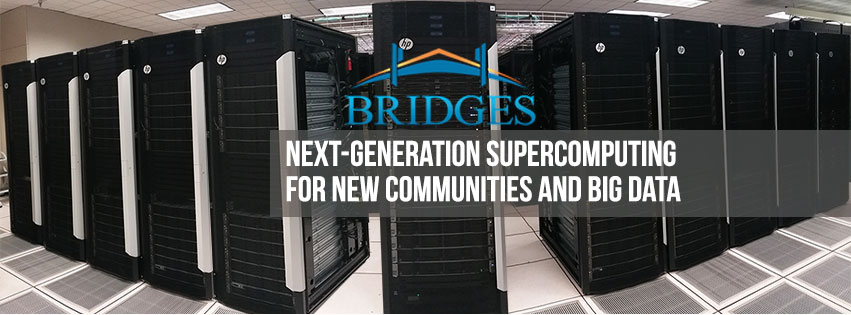
The Bridges system at the Pittsburgh Supercomputing Center (PSC) has entered production operations in support of advances in science, research, engineering, and education. Following approval by the National Science Foundation (NSF), this status change marks the transition to completing integration with other Extreme Science and Engineering Discovery Environment (XSEDE) compute resources, which will streamline use for the approximately 400 research projects that are already using Bridges.
“Bridges has enabled early scientific successes, for example in metagenomics, organic semiconductor electrochemistry, genome assembly in endangered species, and public health decision-making. Over 2,300 users currently have access to Bridges for an extremely wide range of research spanning neuroscience, machine learning, biology, the social sciences, computer science, engineering, and many other fields.”
The NSF-funded PSC Bridges system, with components acquired from Hewlett Packard Enterprise (HPE) and enhanced by PSC’s novel architecture, is a uniquely flexible resource for HPC and Big Data that emphasizes an exceptionally rich software environment, interactivity, and large memory. These factors contribute to its usability and value for a wide range of applications. Bridges also introduces important new technologies for the benefit of the research community. Bridges was the first installation of Intel’s Omni-Path Architecture (OPA) fabric and introduced the HPE Integrity Superdome X servers with 12 terabytes (TB) of RAM to research computing. The system will also provide users with early access to NVIDIA Tesla P100 GPUs.
Another early success of the system has been in supporting workshops, tutorials, classes, and intensive summer sessions on HPC, Big Data, biology, and causal modeling delivered by PSC, other XSEDE institutions, and university faculty. This month, PSC set an XSEDE record by hosting 376 researchers from 17 institutions across the country in a workshop on using Bridges for Big Data applications.
Bridges’ Phase 2 Technical Upgrade, expected over the coming months, will introduce additional 3TB and 12TB large-memory nodes featuring Intel Xeon Broadwell-EX (v4) CPUs and accelerated nodes featuring NVIDIA Tesla P100 GPUs. The upgrade will amplify Bridges’ capability and capacity for nontraditional applications such as deep learning, genome sequence assembly, statistics, and graph analytics.
Bridges is available at no charge for U.S.-based principal investigators doing open research as well as their team members.
In this video from SC15, Bill Manell from HPE, Charlie Wuischpard from Intel, and Nick Nystrom from the Pittsburgh Supercomputing Center discuss their collaboration for High Performance Computing. Early next year, Hewlett Packard Enterprise will deploy the Bridges supercomputer based on Intel technology for breakthrough data centric computing at PSC.




Have you an idea of the error rate in the 12 Terabyte memory with and without ECC, or more globally the failure rate (partial for modules or global) of Bridges